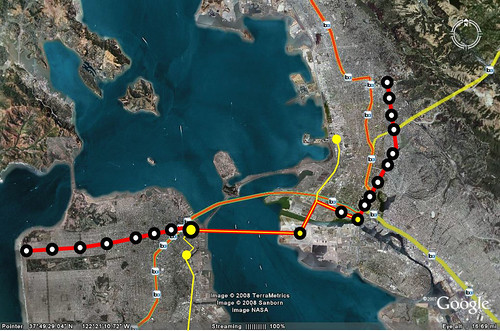This is a
good idea. But it's also another reason why there needs to be more core capacity. The parts of the system that are the most crowded are those between Oakland and San Francisco. This is why I still think that the Geary to Broadway corridor is key to core capacity and accommodating growth. I personally believe that is a 200,000+ rider line.


4 comments:
This is definitely a great idea. It will let BART charge more for peak service, when demand is highest and I would guess the customers are less price sensitive, while giving discounts for using off peak service, the cost of providing which is much lower, since you already have all the infrastructure and enough trains for peak service.
It can and does work. Our Metro system here in Washington DC has had it from the beginning. For example, my daily commute costs $3.55 each way during rush housr but only $2.35 if I take make the same trip any other time. And I do make the trip at many other times, usually for shopping and nightlife.
Rush hour transit demand is definitely inelastic. Back in January, WMATA (the agency that operates the Metro) had to raise fares due to the usual suspects of inflation etc. Despite some whining and complaining and some shrill threats to boycott the Metro from a few loudmouths, ridership immediately went up during February and has remained up. Most people didn't even notice the increases of (approximately on average since our system has a distance based fee structure) $.25 per trip. They were just worried about getting downtown to work. The gas price increases certainly chipped in, too.
Tickets before 7am are free in Melbourne, Australia (modulo shenanigans about timetabling).
rush hour surcharges mostly affect those who work on a fixed schedule--usually the lower paid. If BART would reconfigure the seats and if in the 21st century would bother to match 1950's trains per hour on real subways with FULL Length trains, the issue would recede. Of course we need more transbay throughput--why I am still furious the Bay Bridge fiasco does not include REPLACING the tracks! Whatever new mileage of transit we build MUST be US standard guage!
Post a Comment